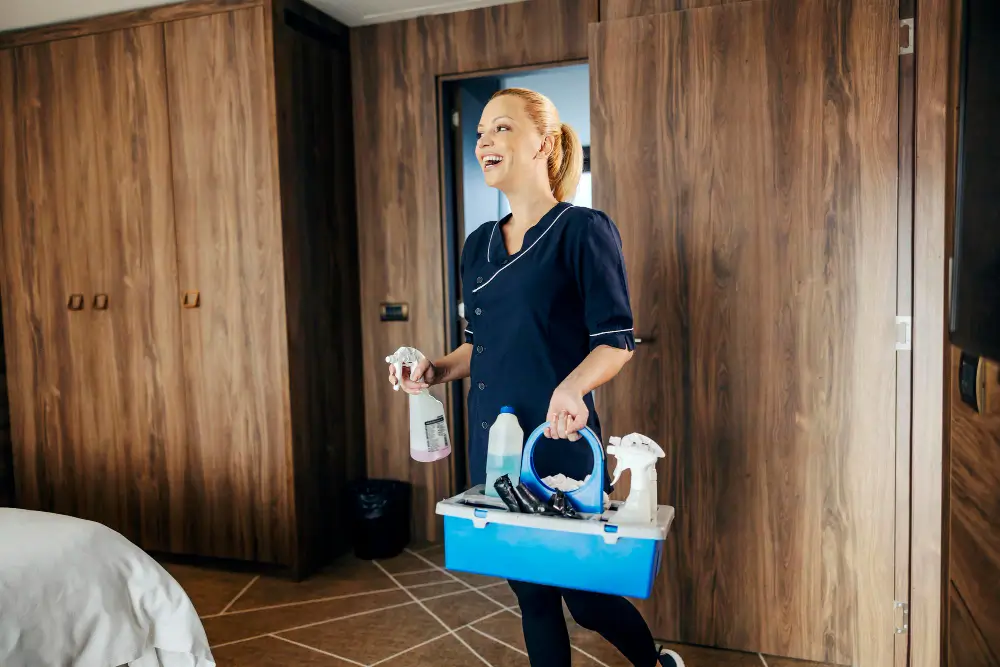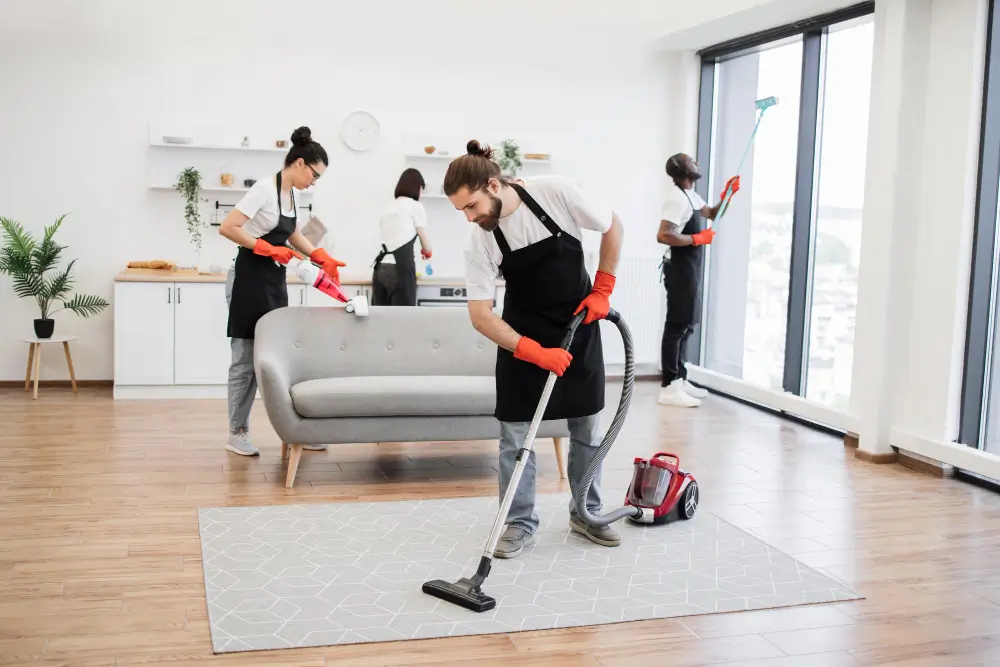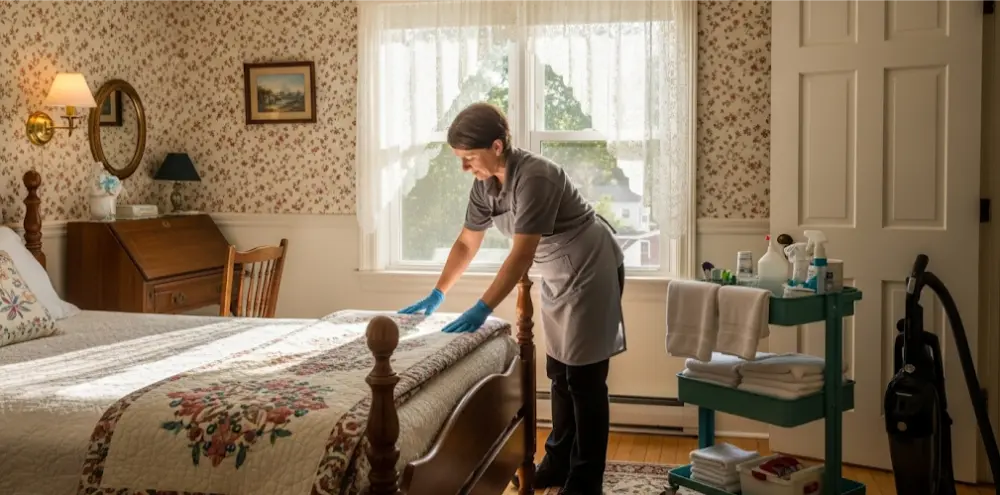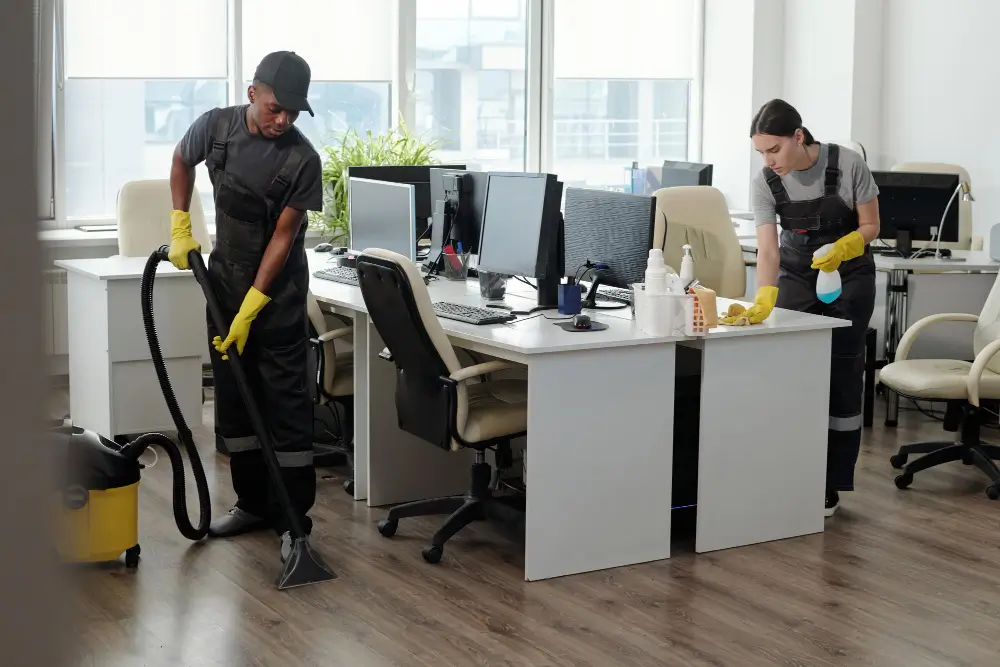
TL;DR: Choose a cleaning provider that proves compliance and follows risk-based protocols. Reliable teams, clear audits and fast response protect patients and keep clinics running.
Key Takeaways:
Patient outcomes improve when clinical spaces are spotless and well managed, because fewer germs mean fewer infections and safer care.
Ask for proof, not promises; your provider should show exactly how their methods meet recognised healthcare standards, with written evidence such as RAMS, COSHH data sheets, training records, and recent audit reports you can check.
Ask for clear proof and keep it simple to check. Use this quick list when you speak with providers:
These basics make it easier to compare quotes and reduce risk. If a provider can’t show them quickly, that is a warning sign.
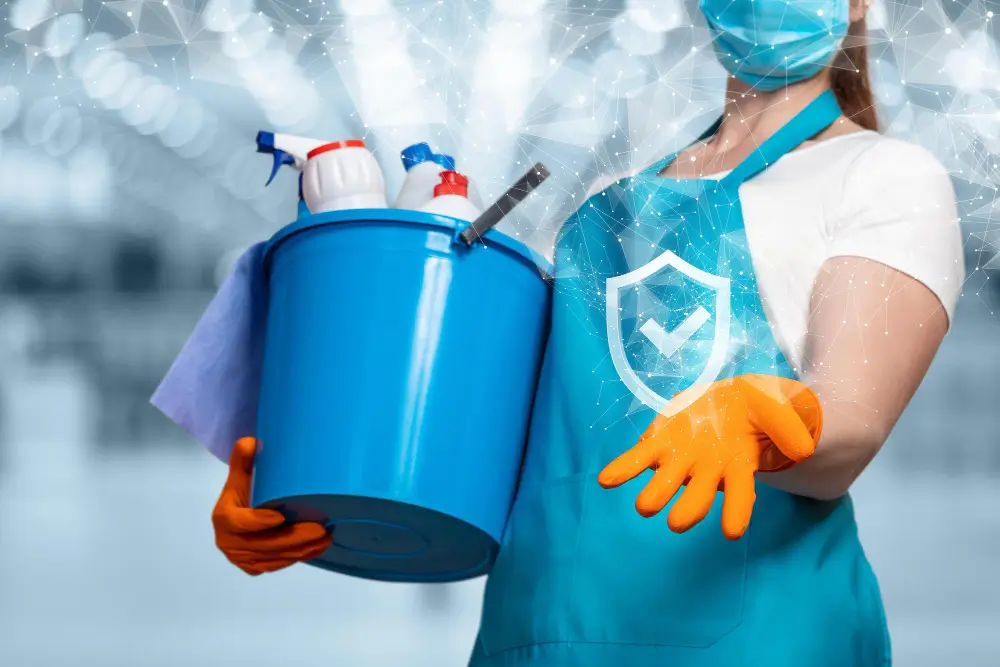
The right team works to risk‑based cleaning schedules that focus on high‑touch points and clinical workflows. They should separate cleaning equipment by zone to avoid cross‑contamination and use fresh microfibre for every room.
Ask how isolation rooms, theatres, waiting rooms, and washrooms are handled differently. Clarify dwell times for disinfectants, ventilation considerations, and how they escalate if an infection is suspected.
Many quotes cut corners by listing tasks without linking them to risk. Insist on a method statement that maps tasks and frequencies to your patient pathways.
Your plan should cover routine cleans, reactive cleans, terminal cleans, periodic deep cleans, and consumables management. It should also set out opening and locking protocols, alarm access, and lone worker safety.
See seven reasons why proper facility cleaning helps keep patients safe on our facility cleaning & patient safety page.
Clinical spaces need higher frequencies and strict sequencing to prevent re‑contamination. Non‑clinical spaces need thoroughness too because staff move between zones.
Agree clear service levels for daily, weekly, and periodic tasks. Make sure they include surge capacity for winter pressures and outbreaks.
Check that products are EN‑standard and suitable for healthcare surfaces. Confirm they will not damage floors, upholstery, or specialist equipment.
Ask about ATP or similar validation, plus routine calibration and maintenance of equipment. Verify safe storage, decanting, and labelling procedures.
Data beats promises when the ward is busy and time is short. Ask for simple digital proof you can check at a glance.
A good audit trail should make accountability obvious. Look for:
For more on how weak cleaning standards raise clinical risk, see our short guide on infection control risks.
Great outcomes rely on stable teams who know your site. Look for consistent staffing, named supervisors, and a clear escalation path that is actually answered.
Your provider should support staff wellbeing, vaccinations, and safe shift patterns. This reduces turnover and protects continuity of care.
Healthcare does not pause for broken machines or staff sickness. Ask how fast they can provide cover, what stock they hold locally, and who makes the call when minutes matter.
You need a plan for urgent decontamination, flood response, and biohazard incidents. Confirm timescales for attendance and the authority structure for go‑ahead decisions.
Long lock‑ins rarely suit clinical services that change with demand. Look for flexible terms, simple scopes, and clear change control that supports new clinics or refurb projects.
Your quote should be bespoke to your site, including consumables, waste streams, and specialist tasks. Transparency prevents cost surprises and keeps patient spaces safe.
Use this list during your next tender or review. Keep it on one page and tick items during site visits.
Quotes with vague tasks and no risk mapping usually lead to missed areas. Reports that arrive late or only when requested hide quality issues.
High staff churn or last‑minute subcontracting erodes trust and continuity. Products without EN standards or no clear dwell times reduce disinfection effectiveness.
Pick a provider with a short mobilisation plan that keeps your clinic running and your team confident; on day one you should know roles and who to call if issues arise.
Before go‑live they should complete a site survey with photos, align cleaning rotas to clinic schedules, finish staff inductions and DBS checks, and supply a 30/60/90 day timeline with confirmed supplies and an early audit to agree any fixes.
Very low quotes often hide cut corners; that can mean less frequent cleans, inexperienced staff or products that fail when you need them most. Ask for a clear breakdown of tasks, cleaning frequencies and what the price actually covers so you can compare like for like.
Good providers prove their value with preventative cleaning, steady teams and fast incident response that cut downtime and clinical risk. Request lifecycle costs, any data on reduced infections or complaints, and brief examples where better cleaning saved time or money.

LZH Cleaning Group supports healthcare, commercial, and education sites with trained, DBS‑checked teams who are friendly and reliable. Based in Bedford, we tailor flexible cleaning plans to your workflow so your staff can focus on patient care.
We follow NHS-aligned protocols, keep traceable audits, use colour-coded systems and hospital-grade disinfectants, and our supervisors run regular training you can track. We do not tie you into long contracts, offer same- or next-day cover, and provide clear, tailored quotes; see our healthcare cleaning page.
Book a no‑obligation healthcare cleaning assessment and get a simple action plan within days. We will review your current setup, highlight risks, and map a clear path to safer, cleaner clinical spaces.

